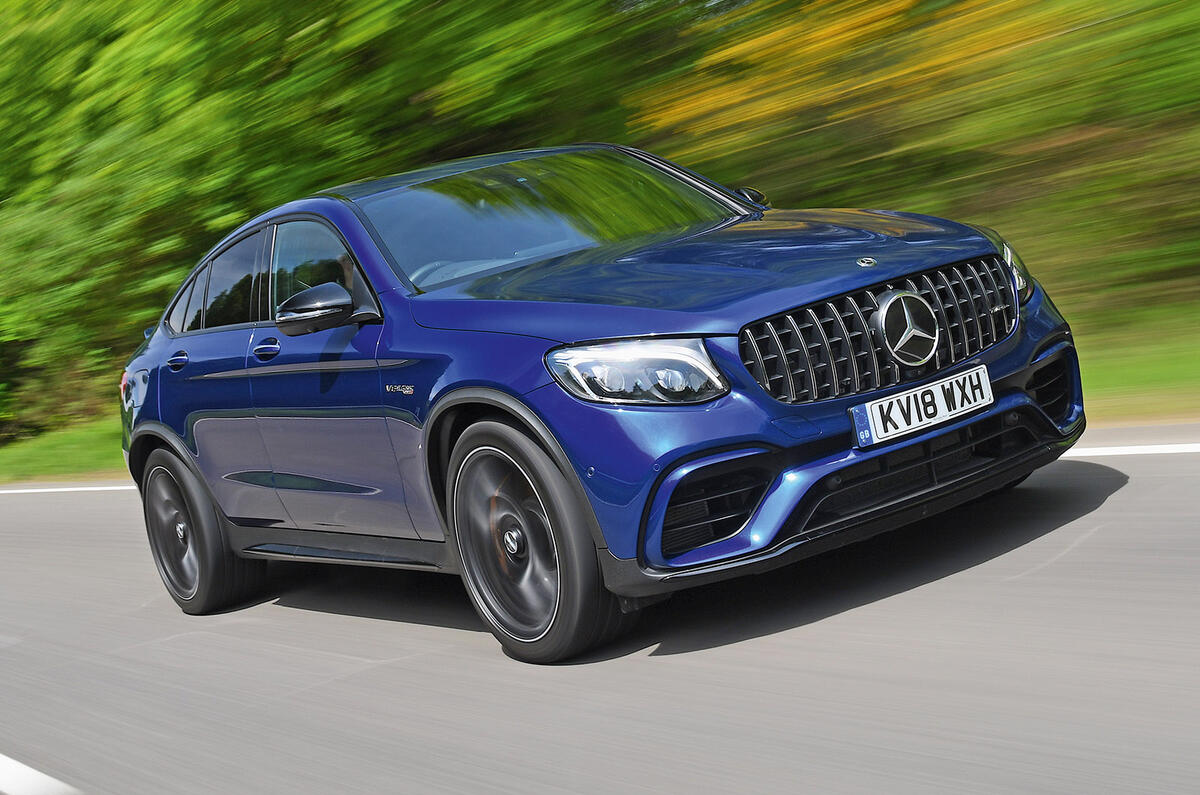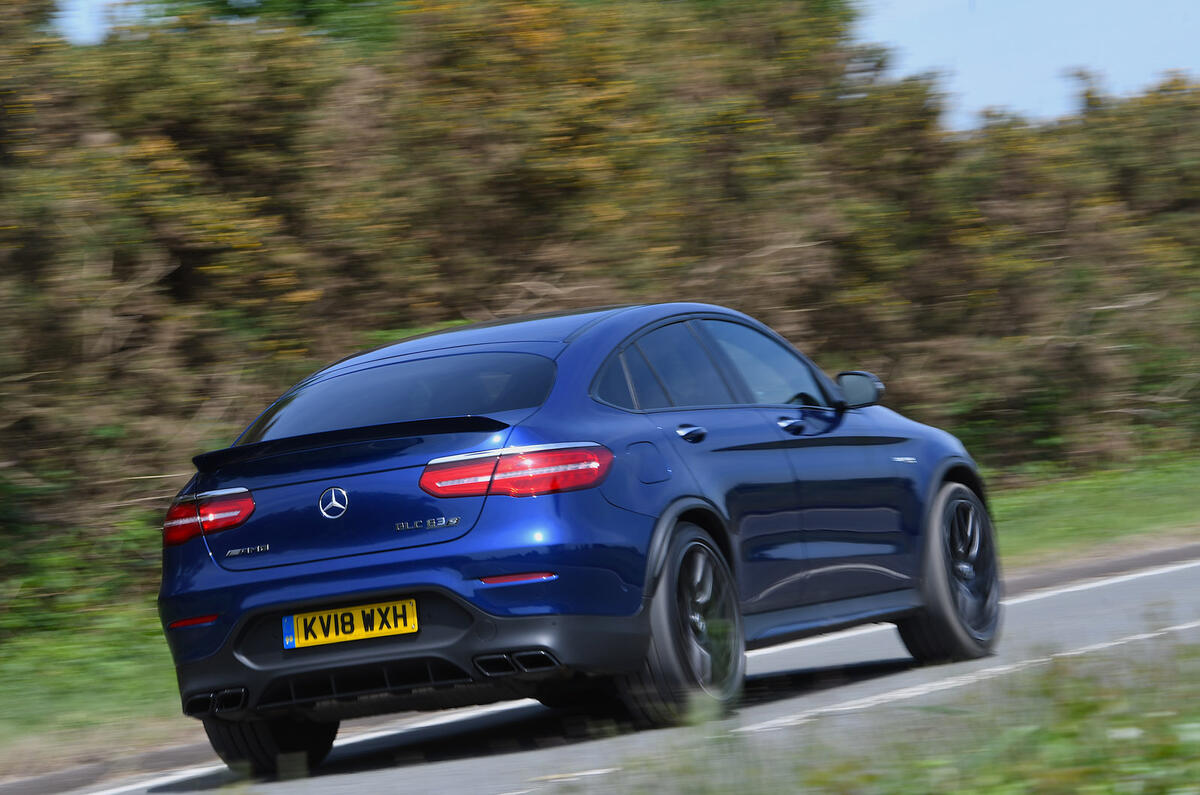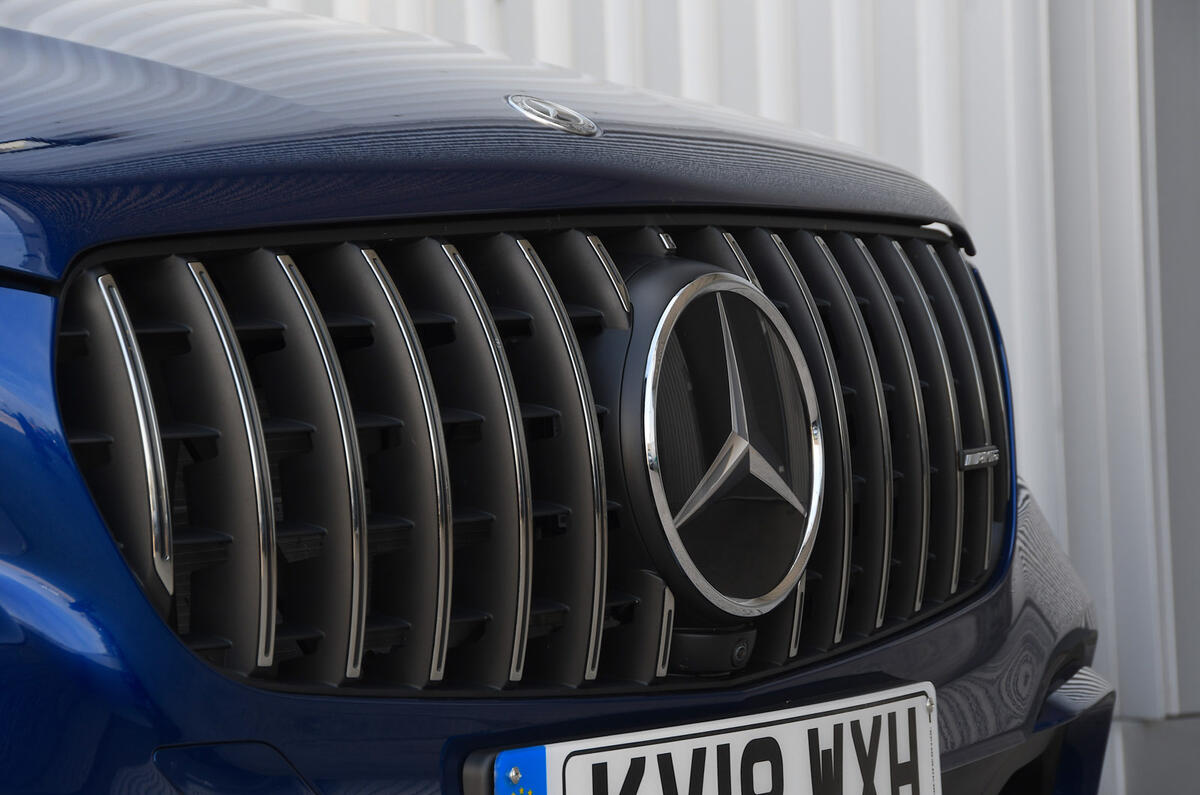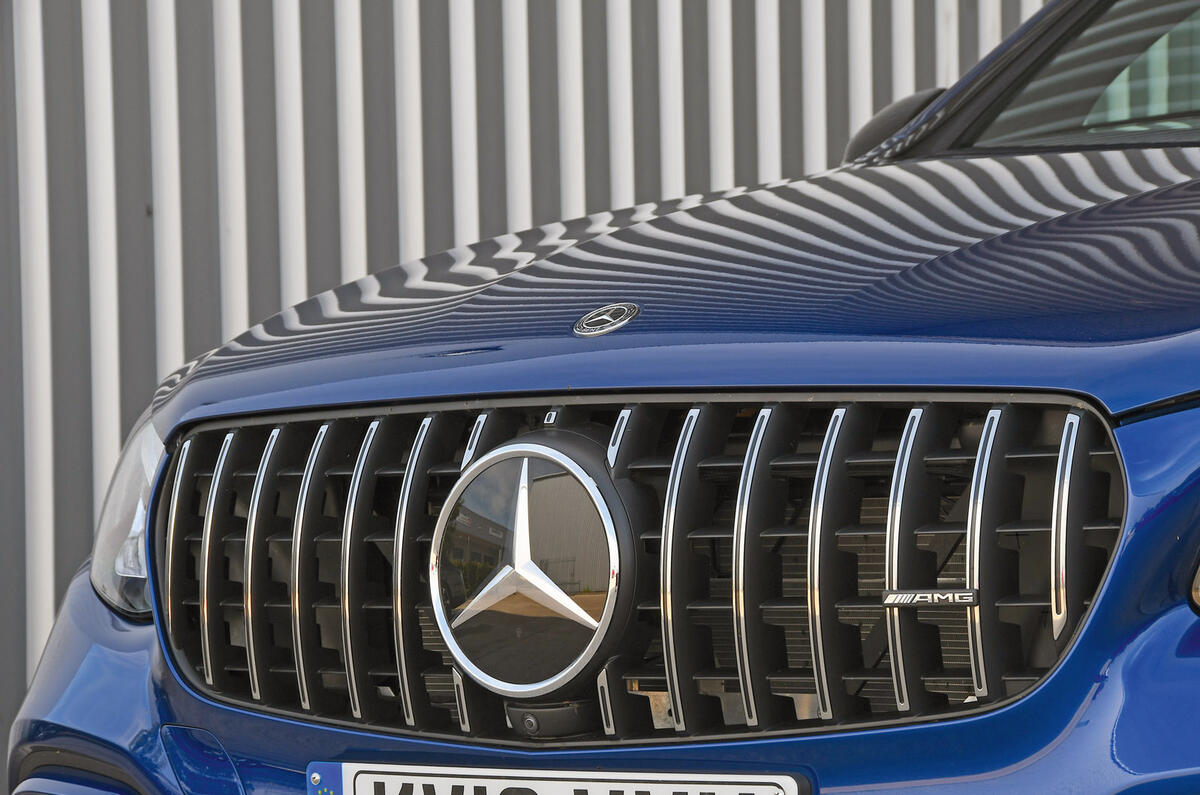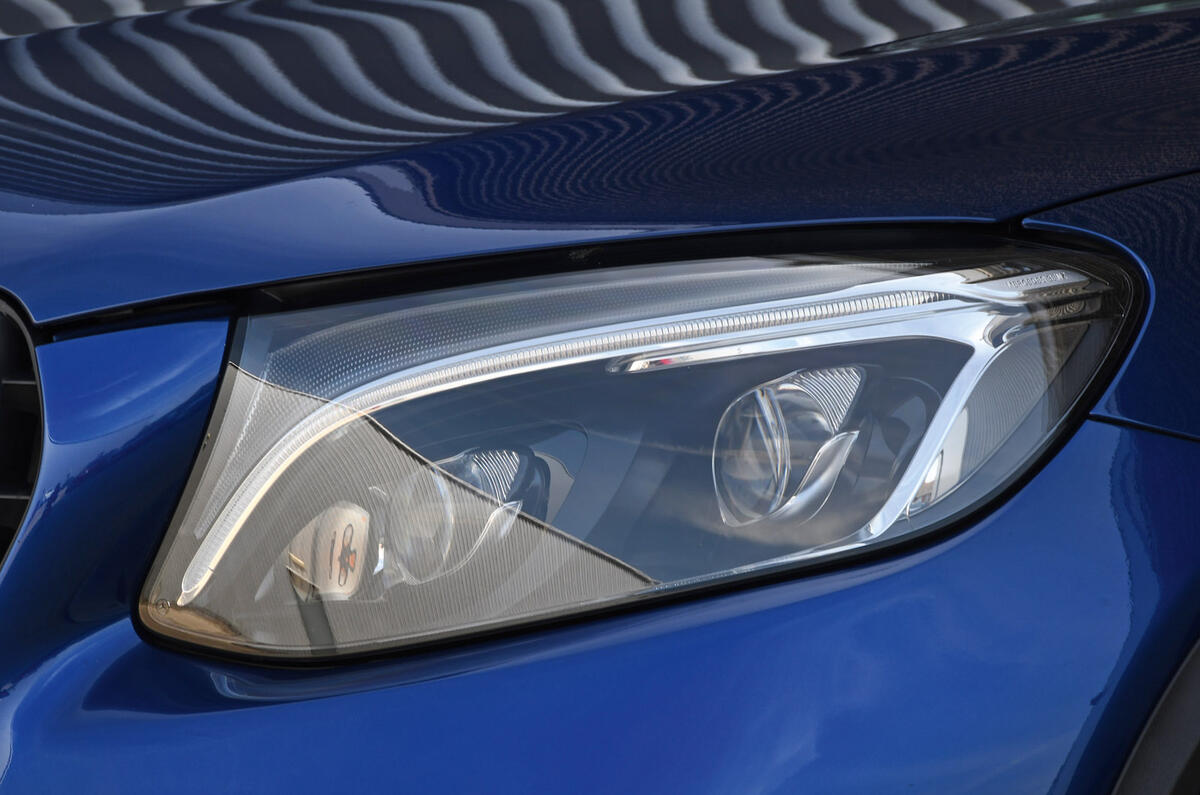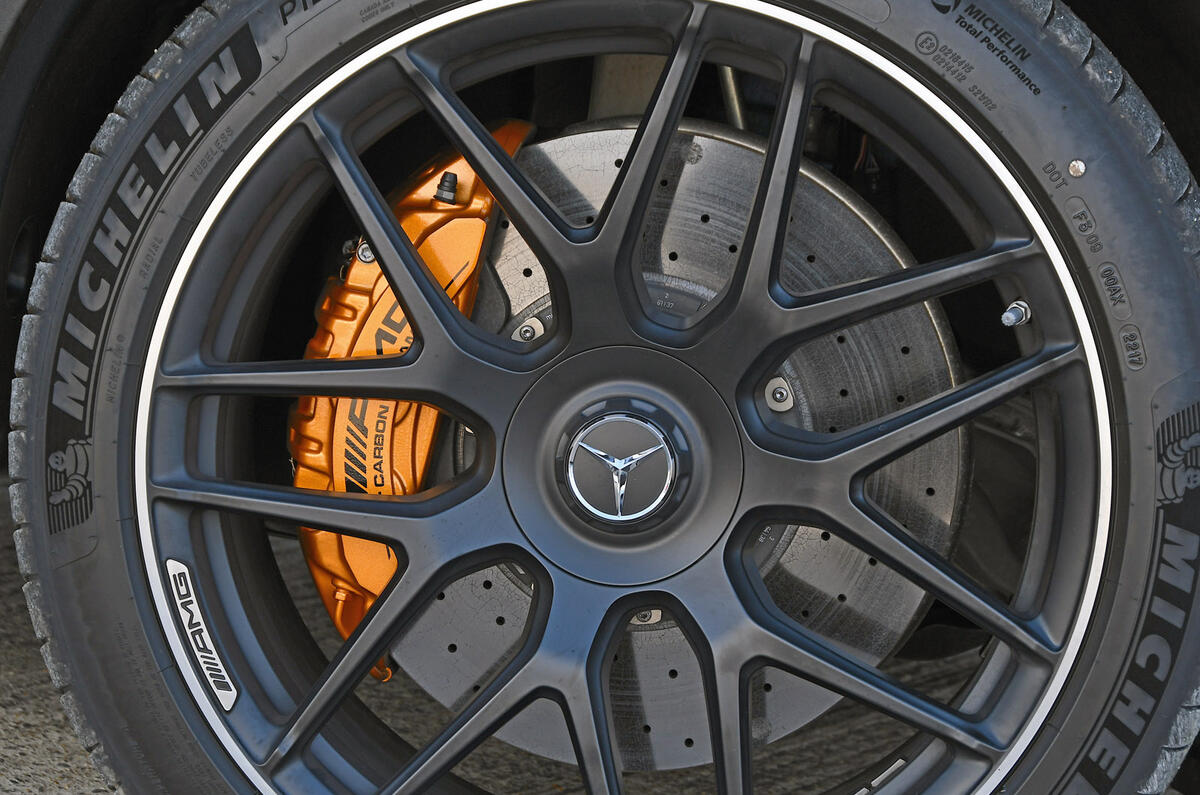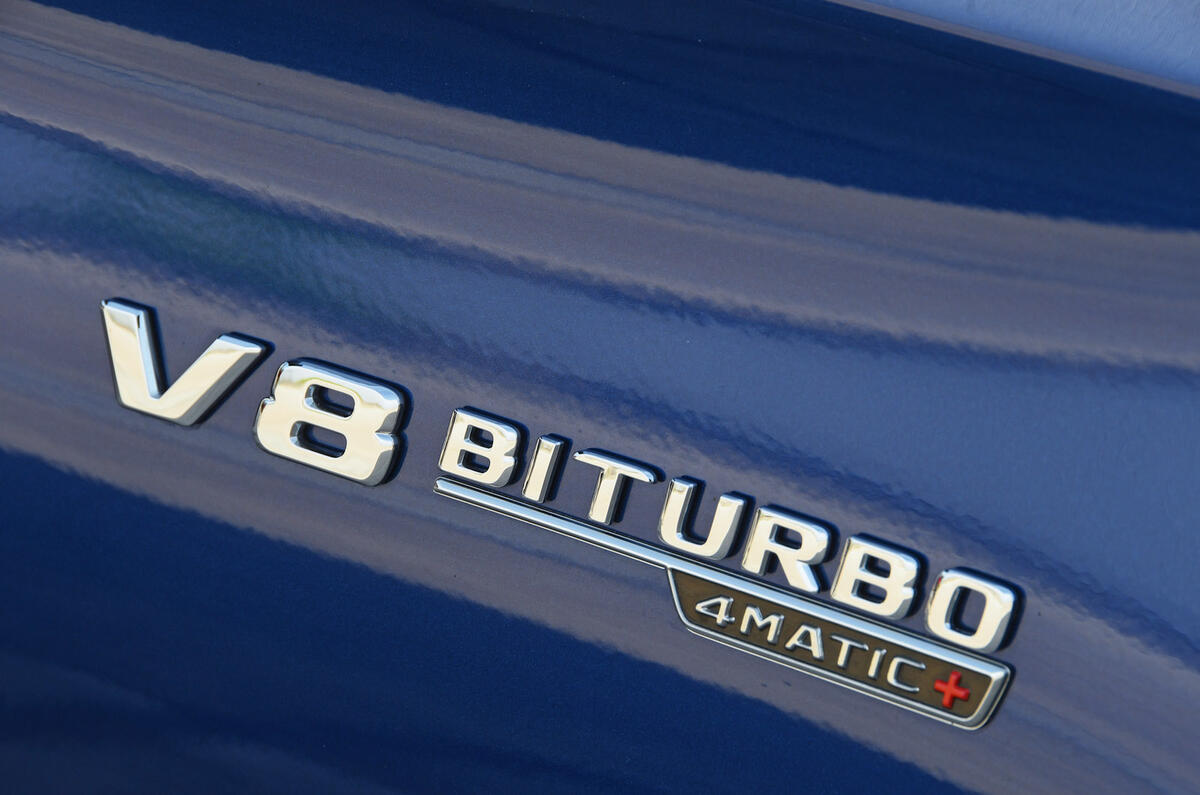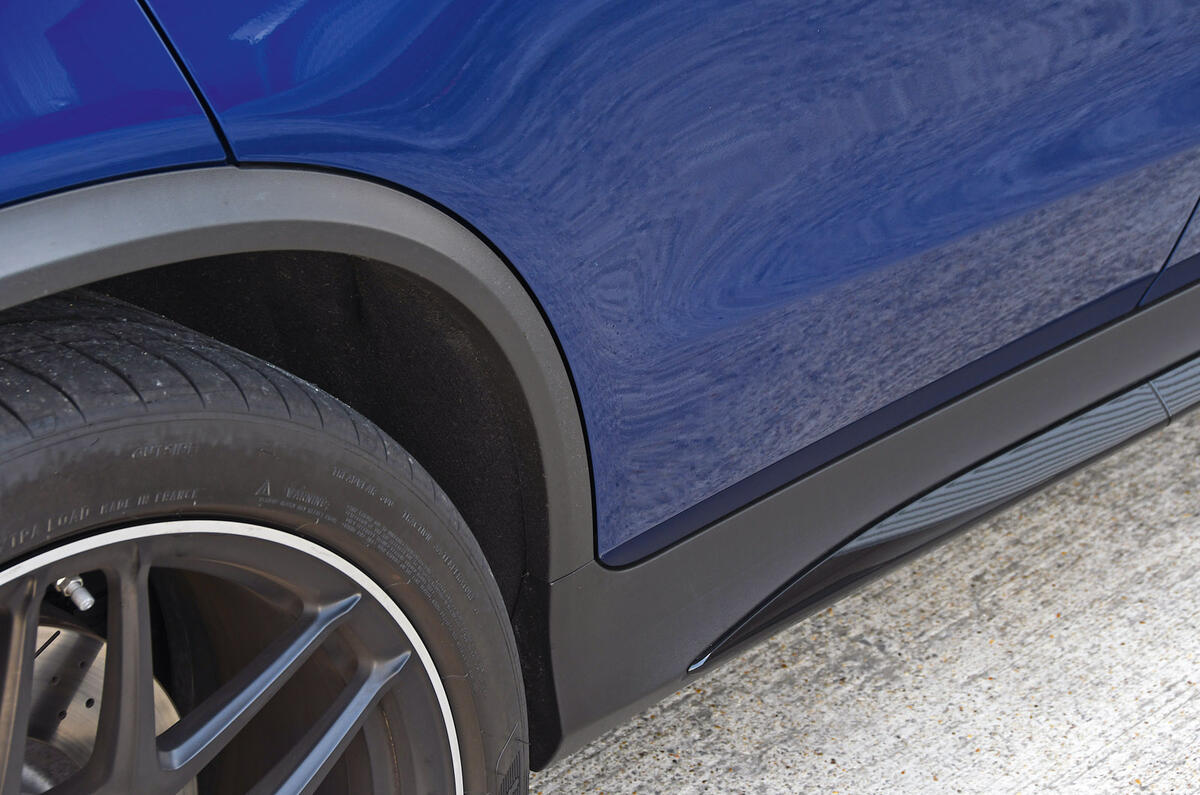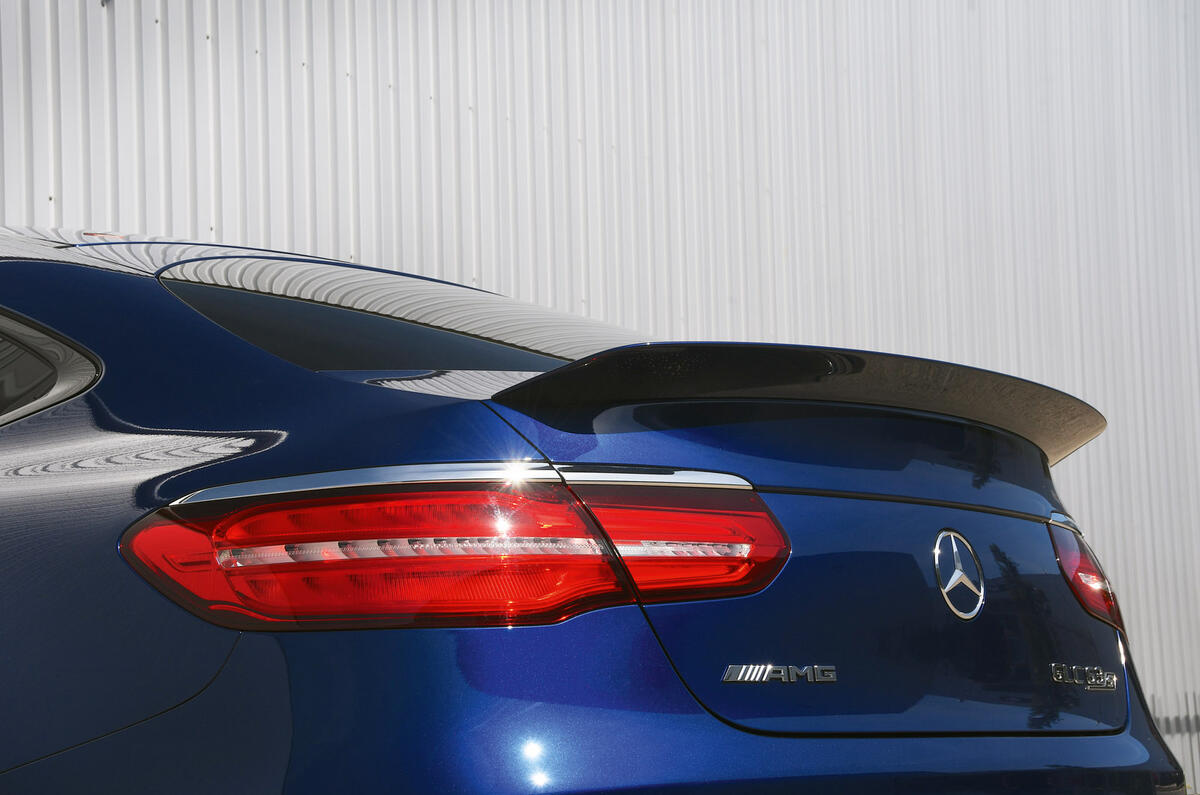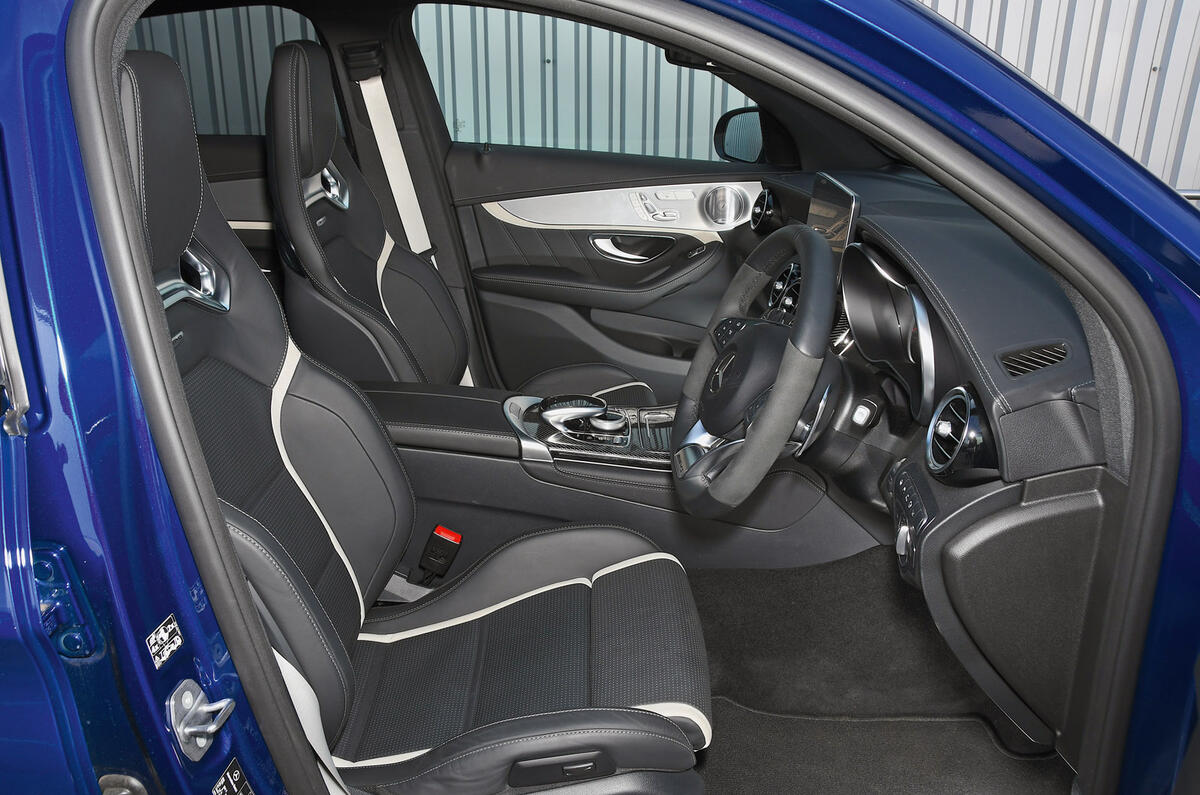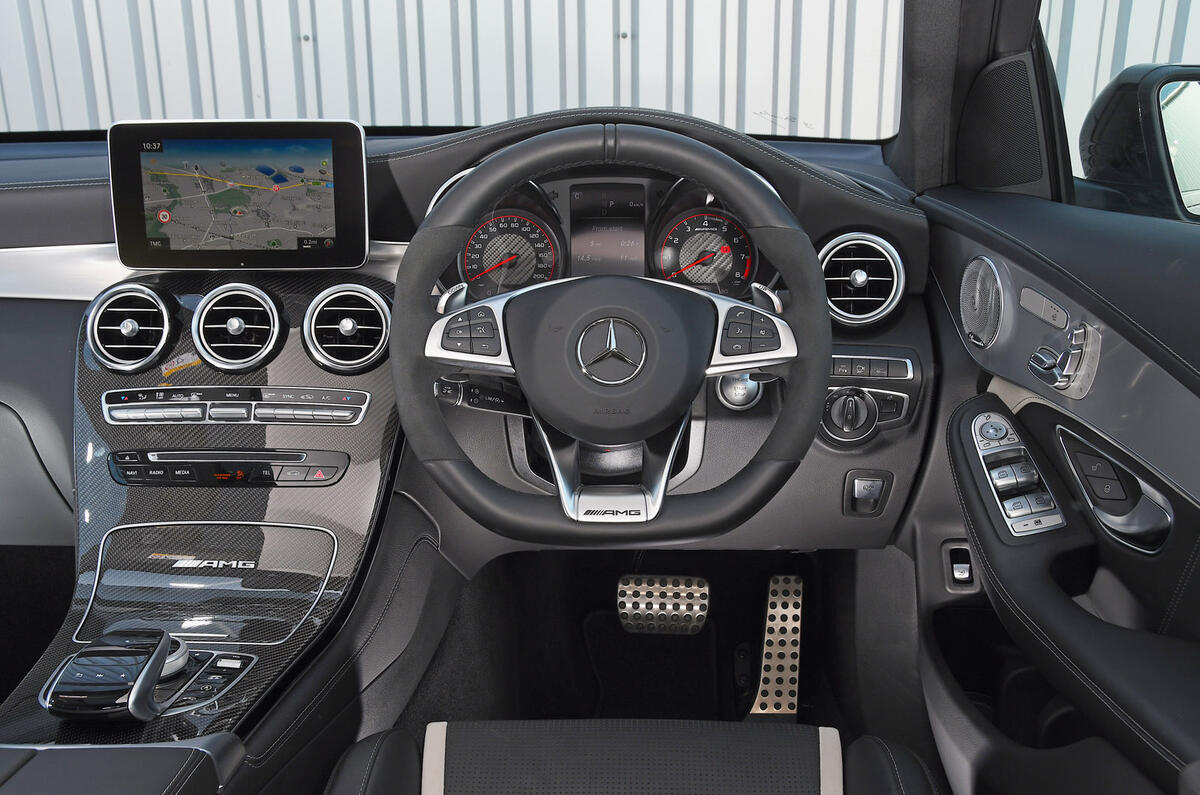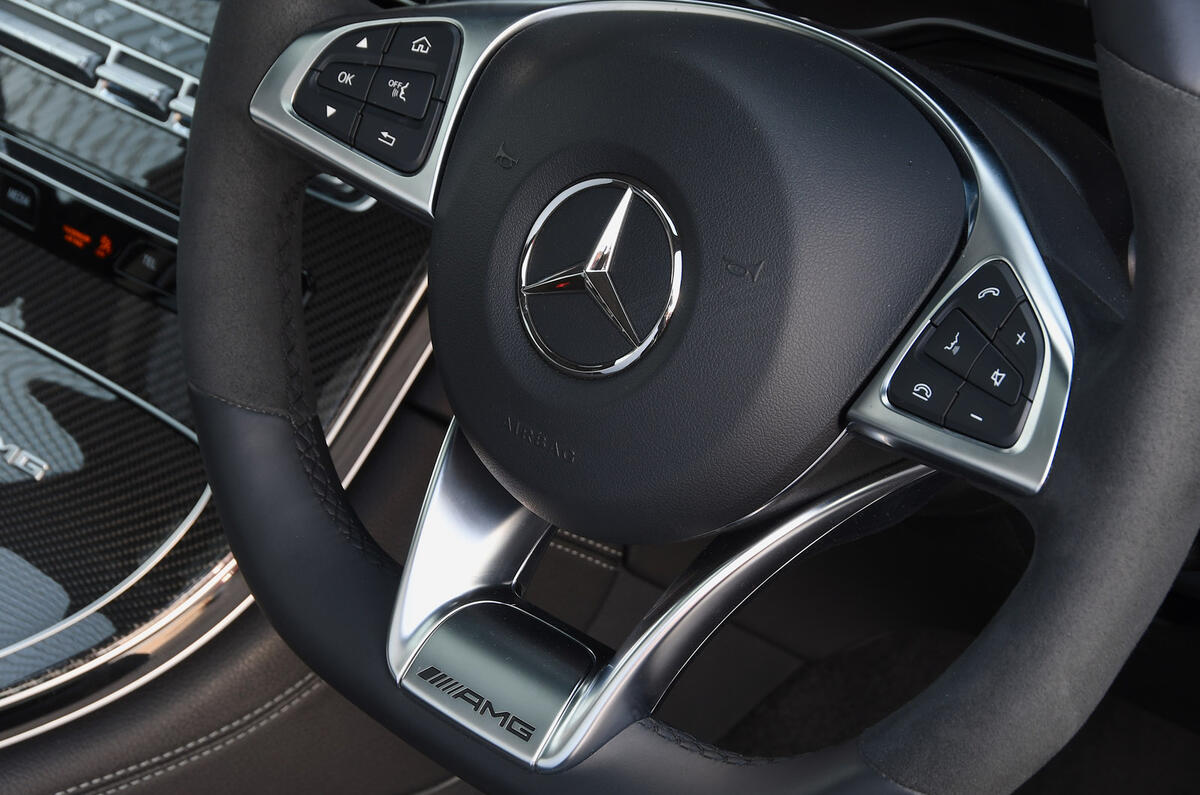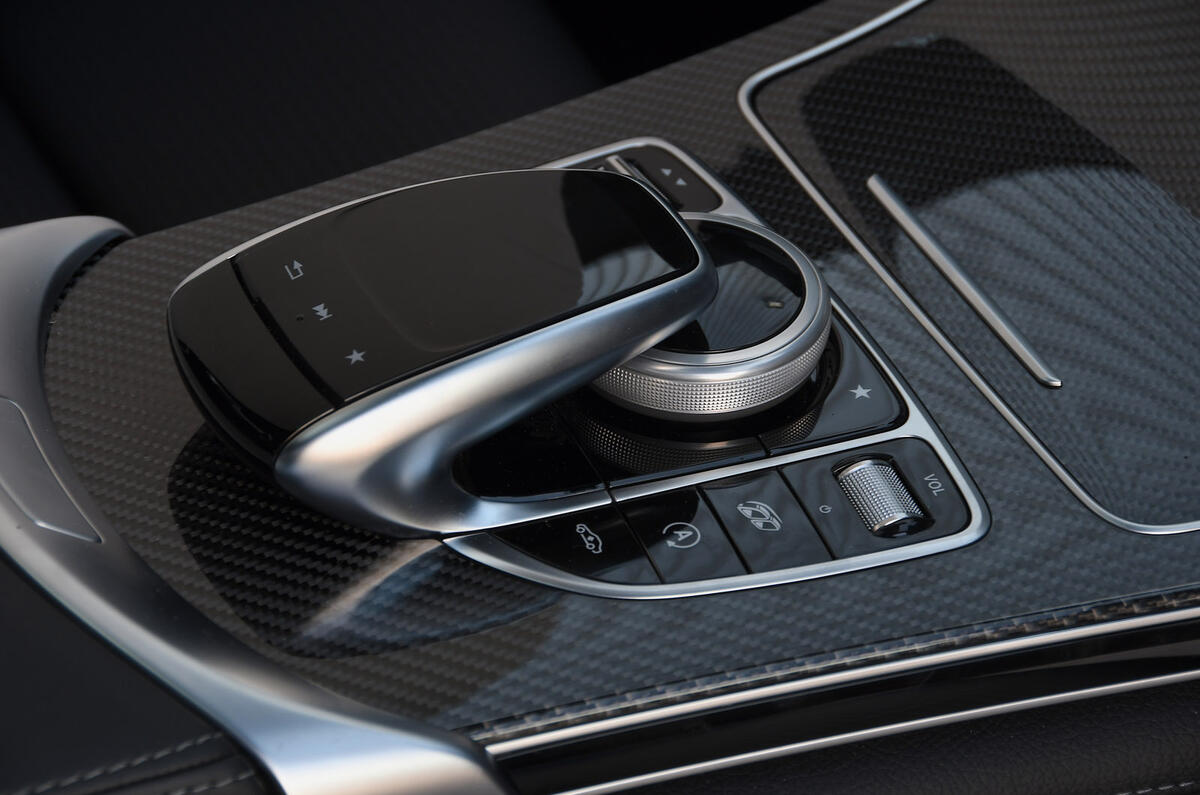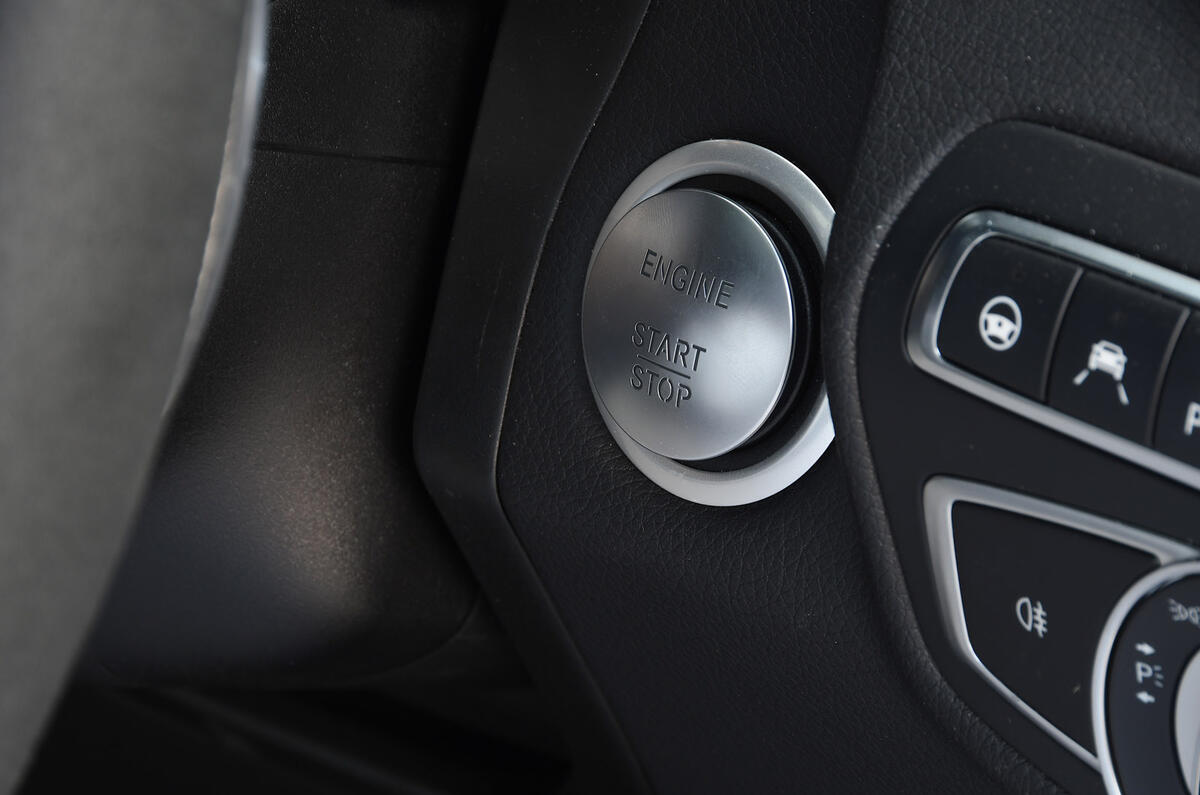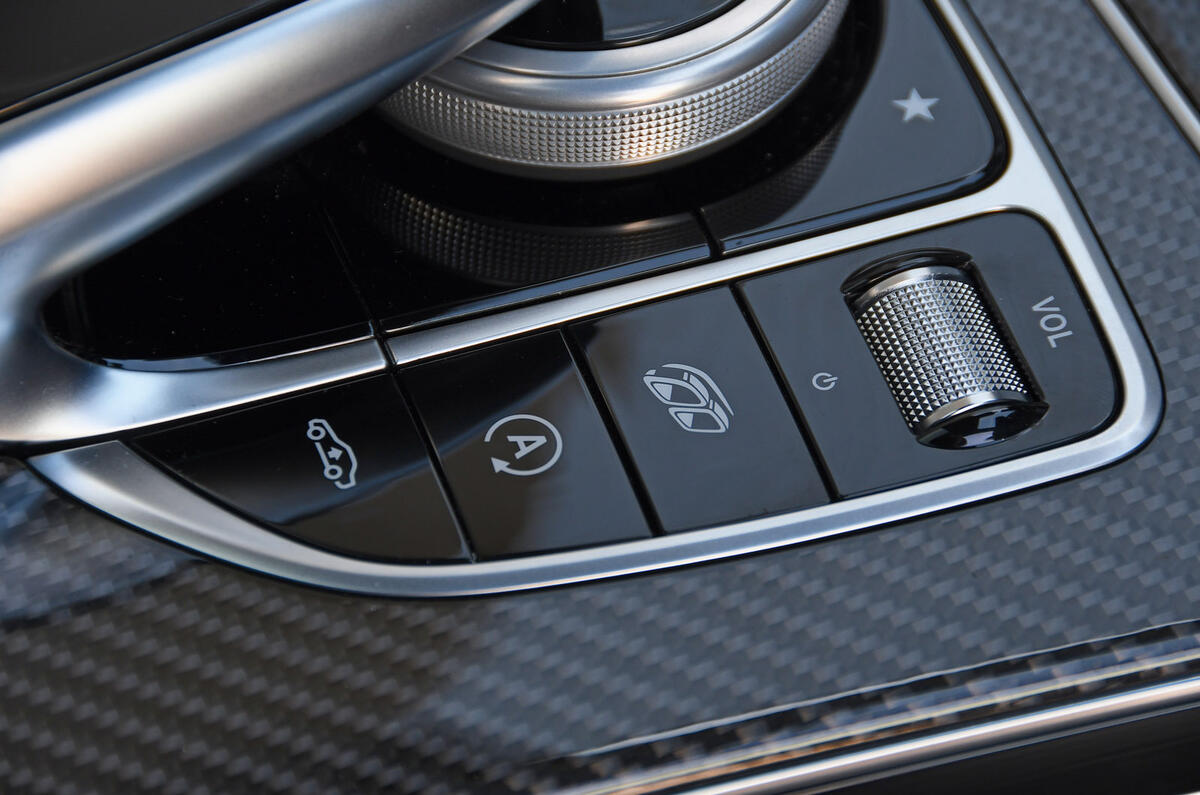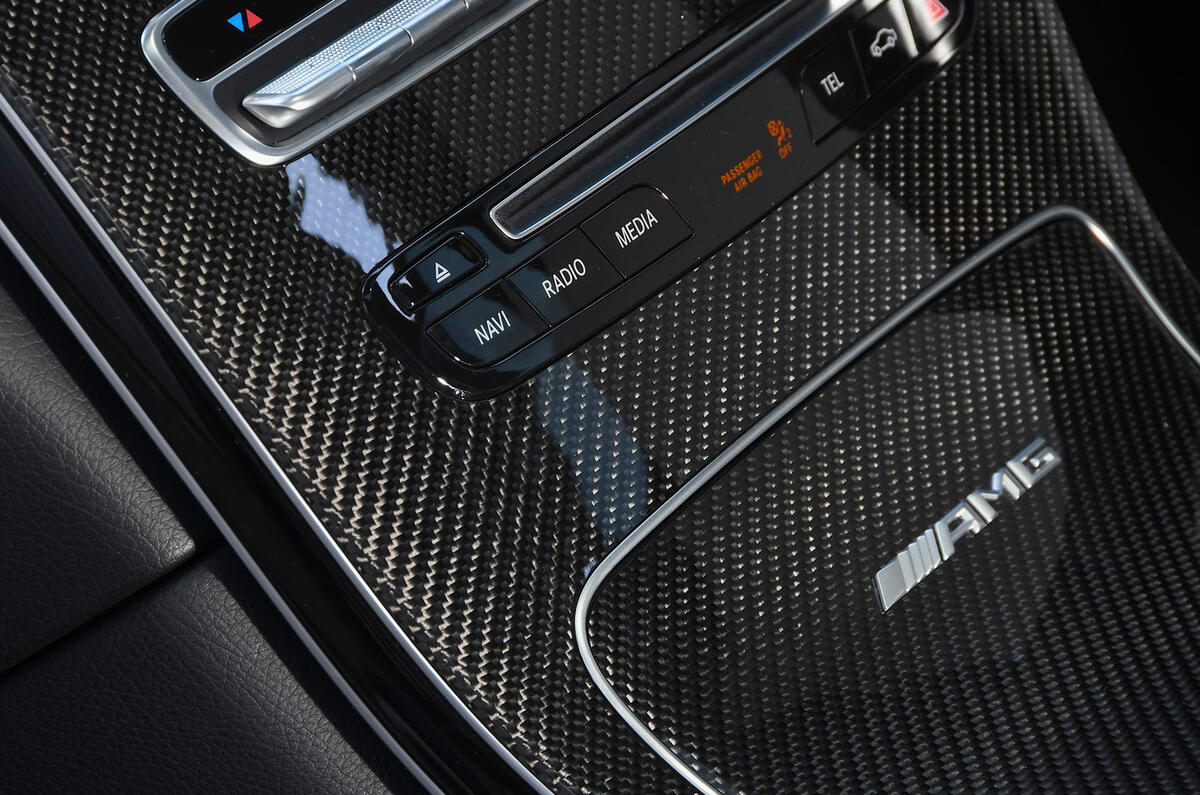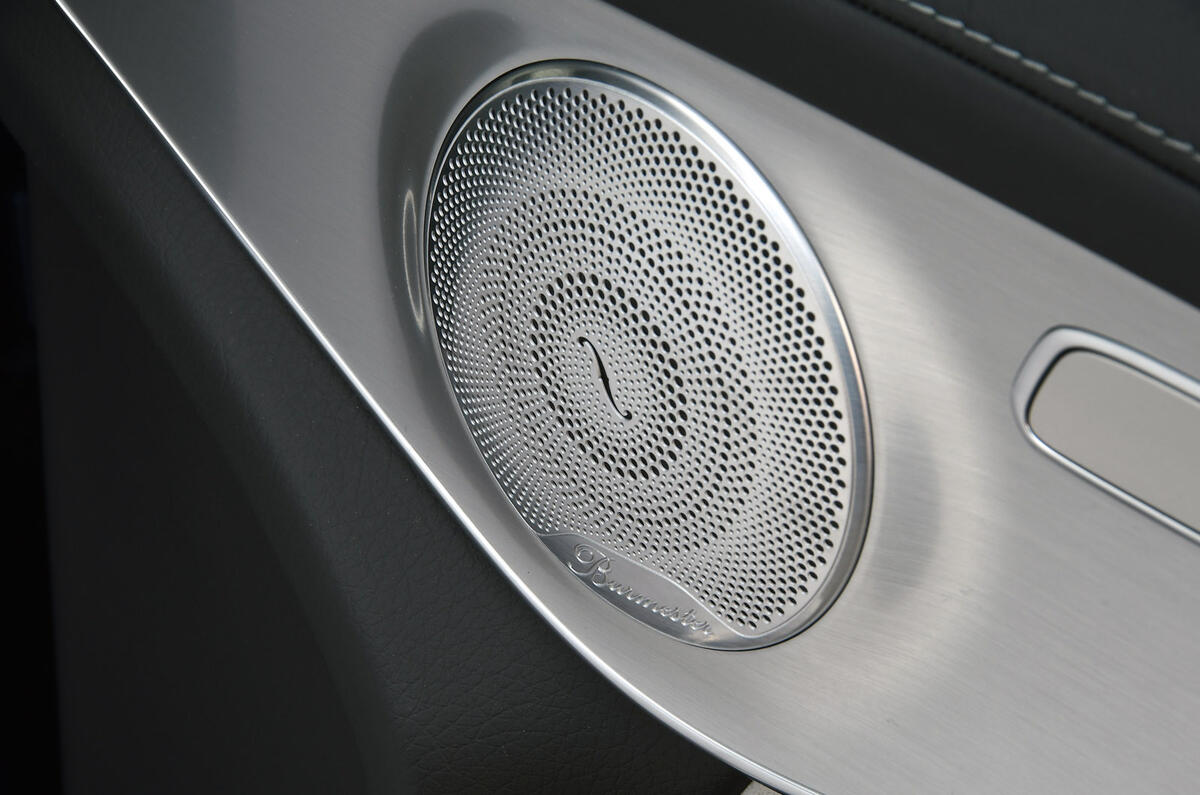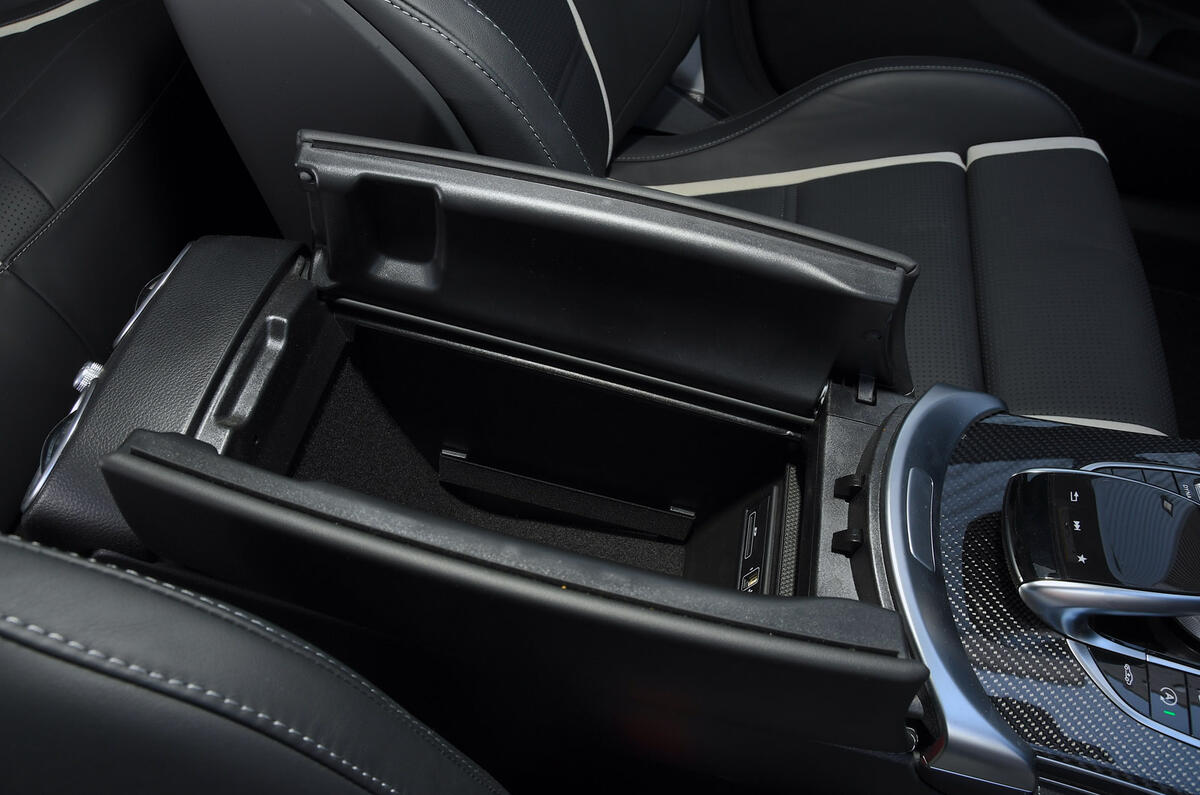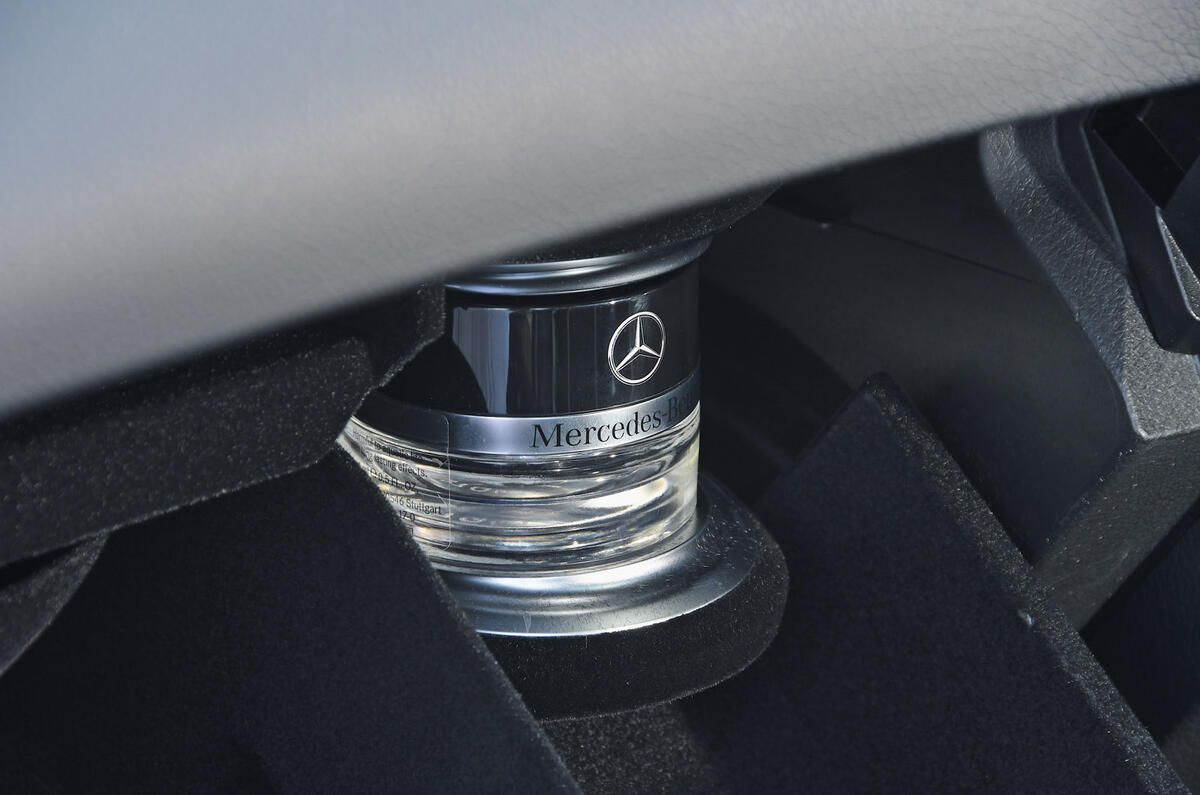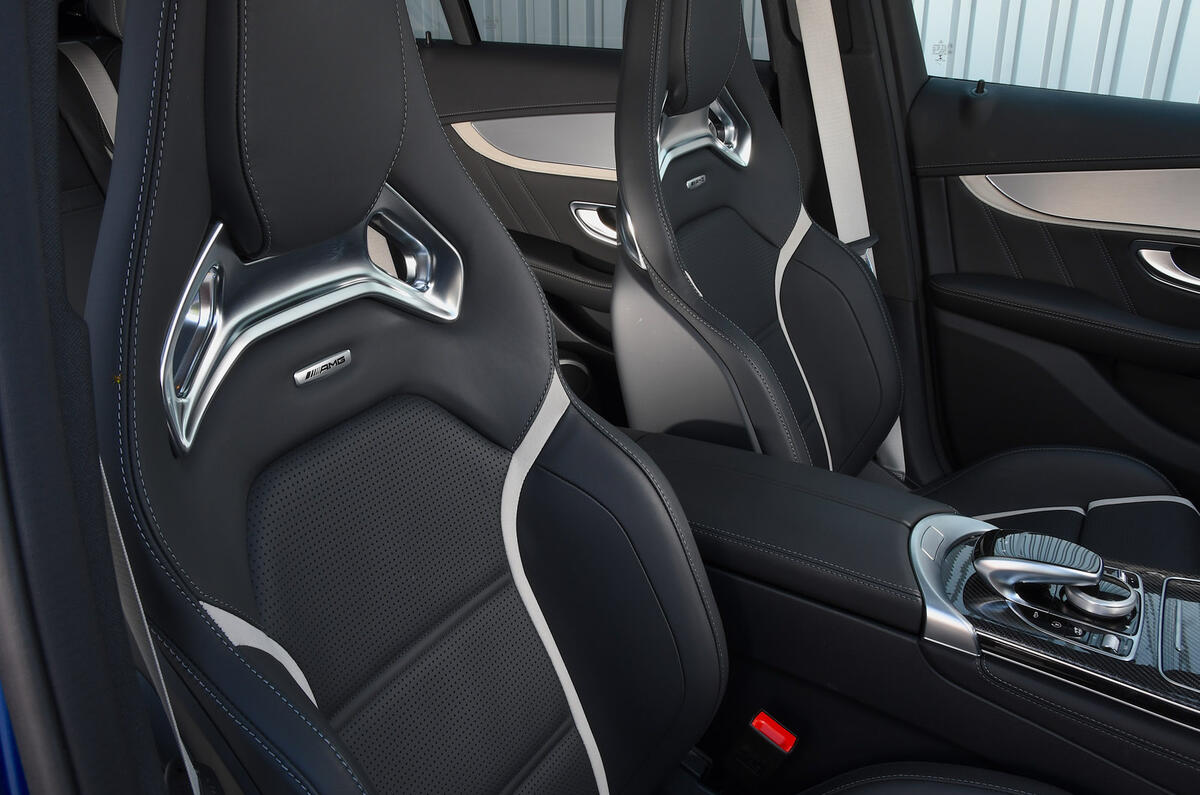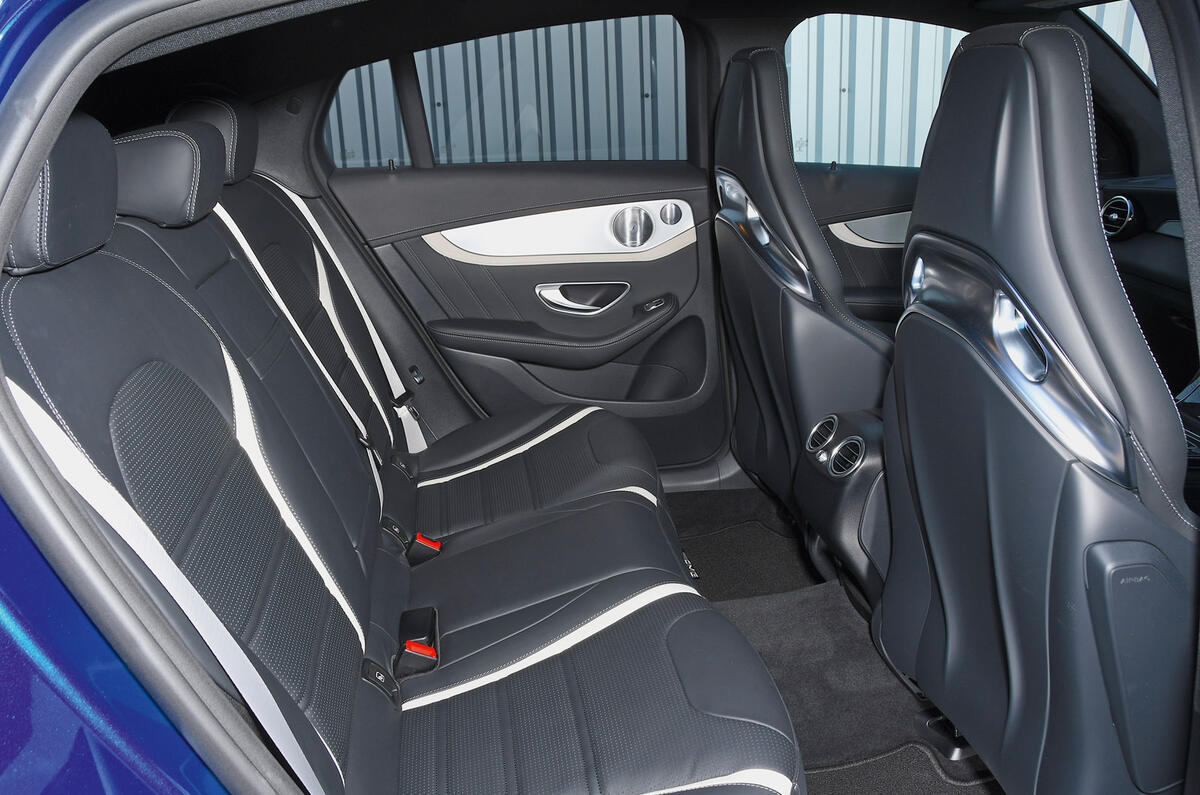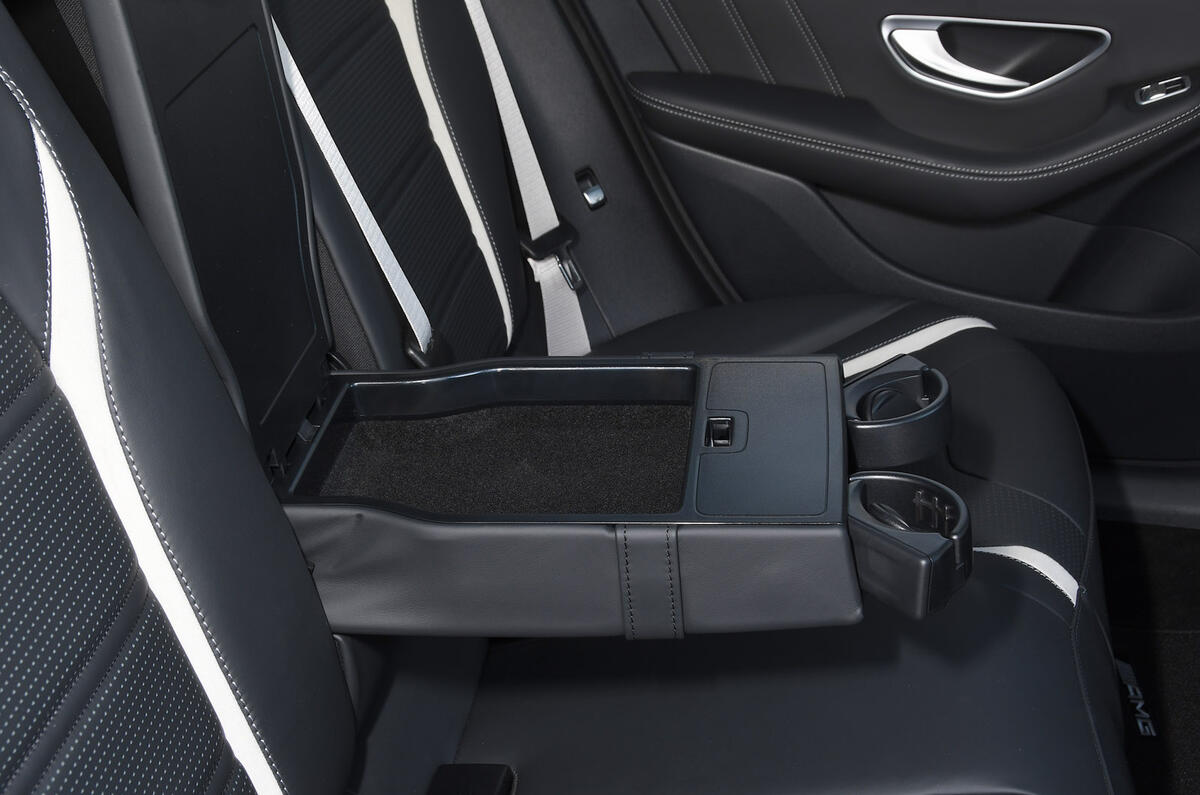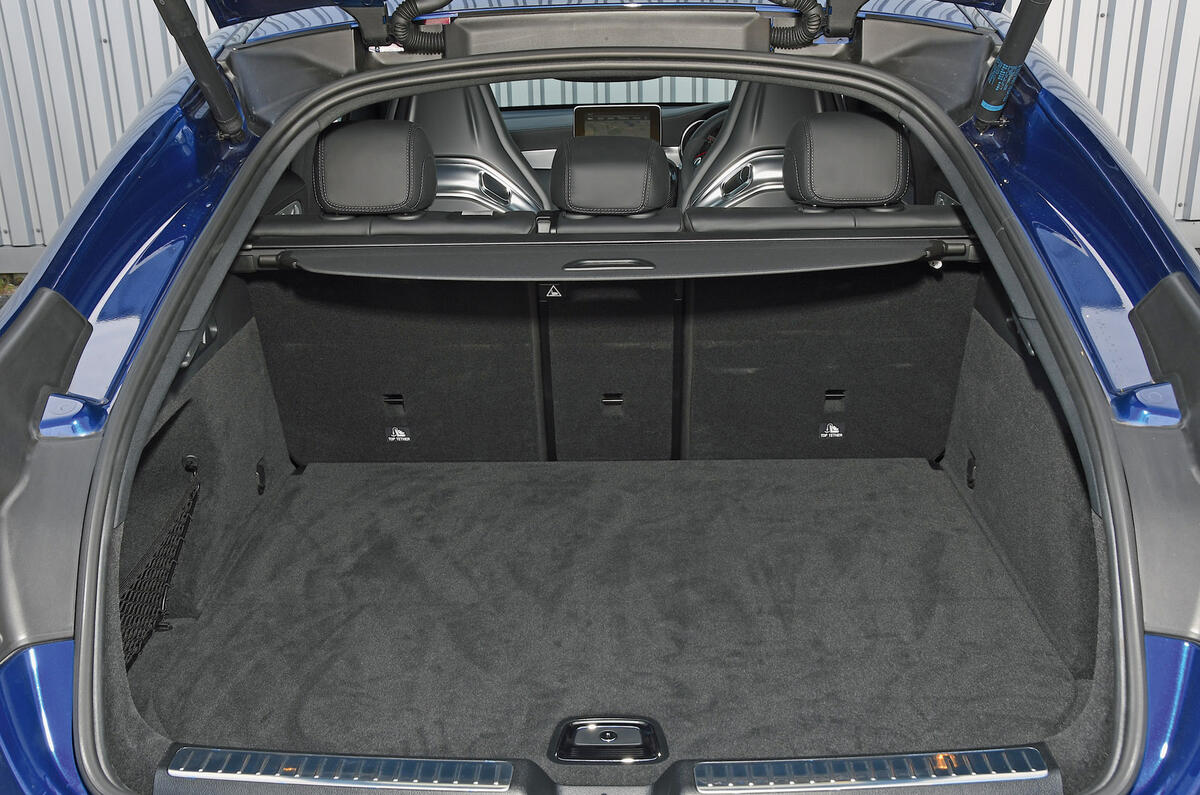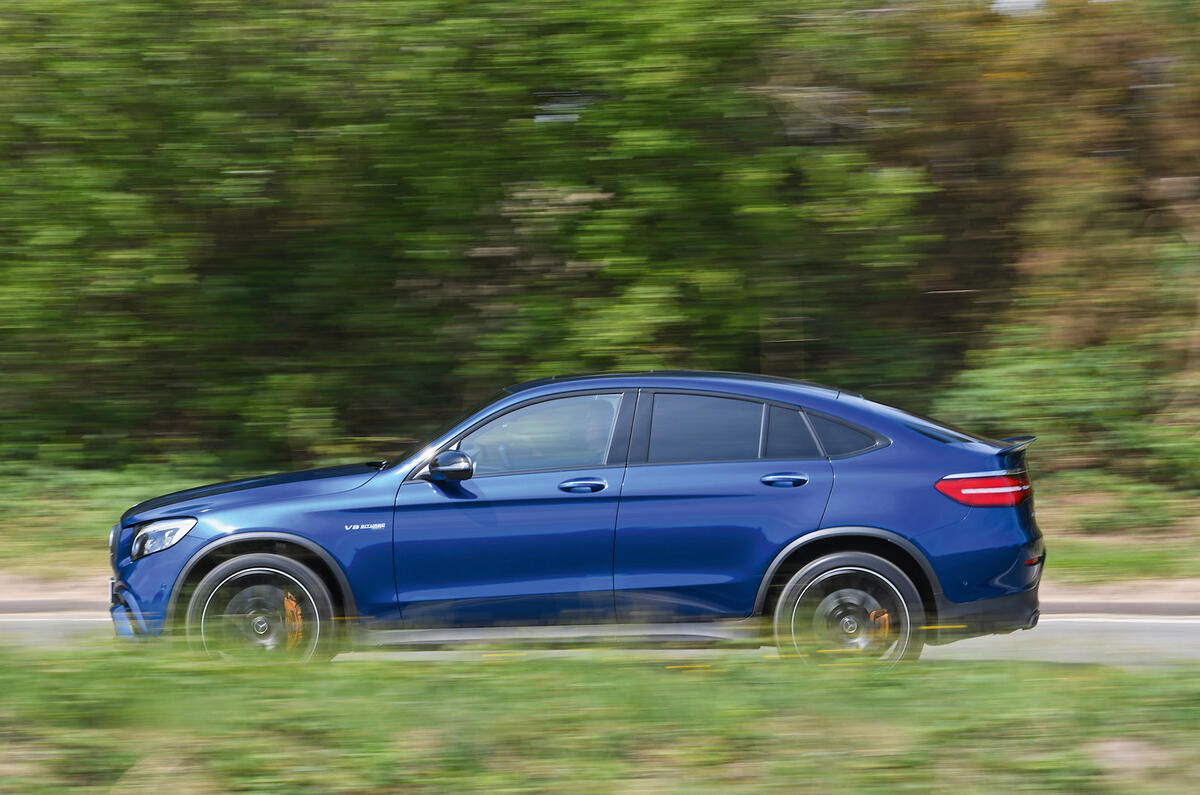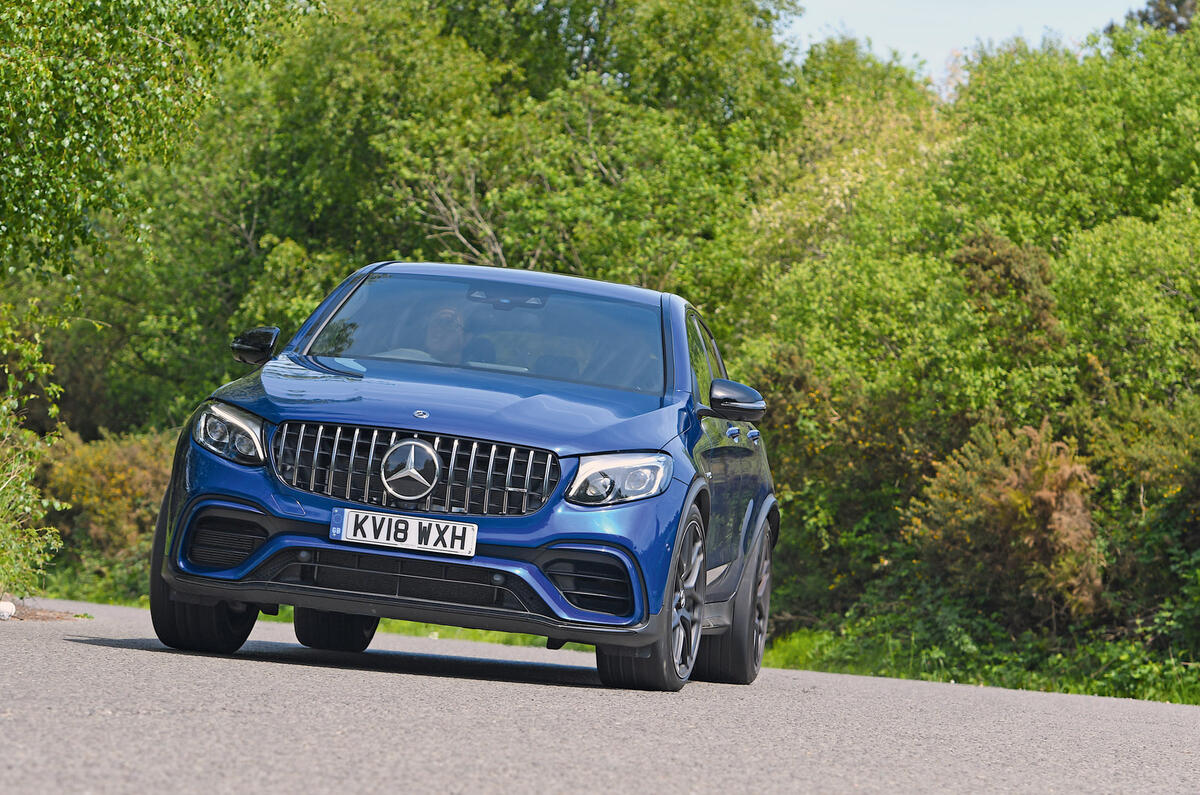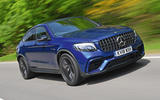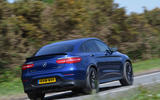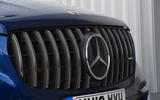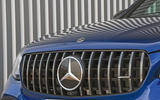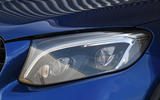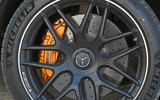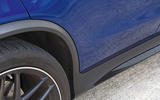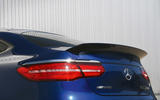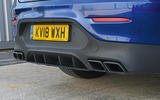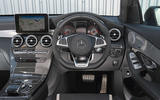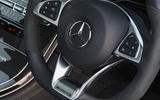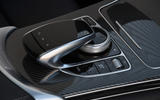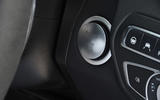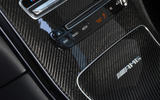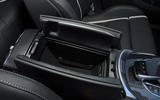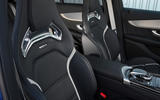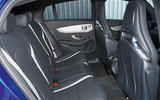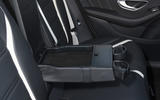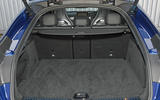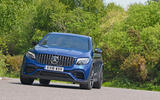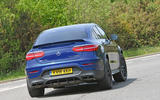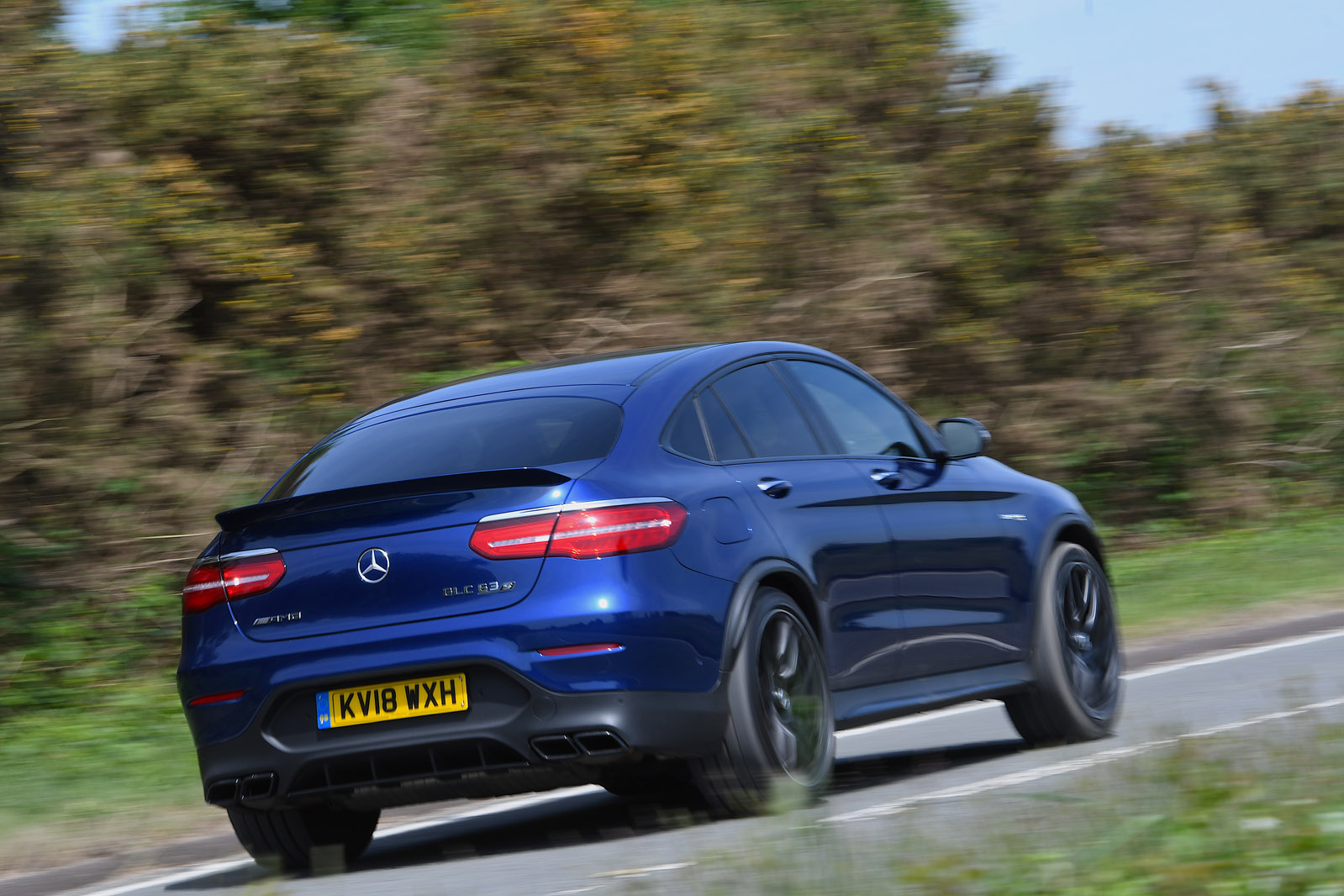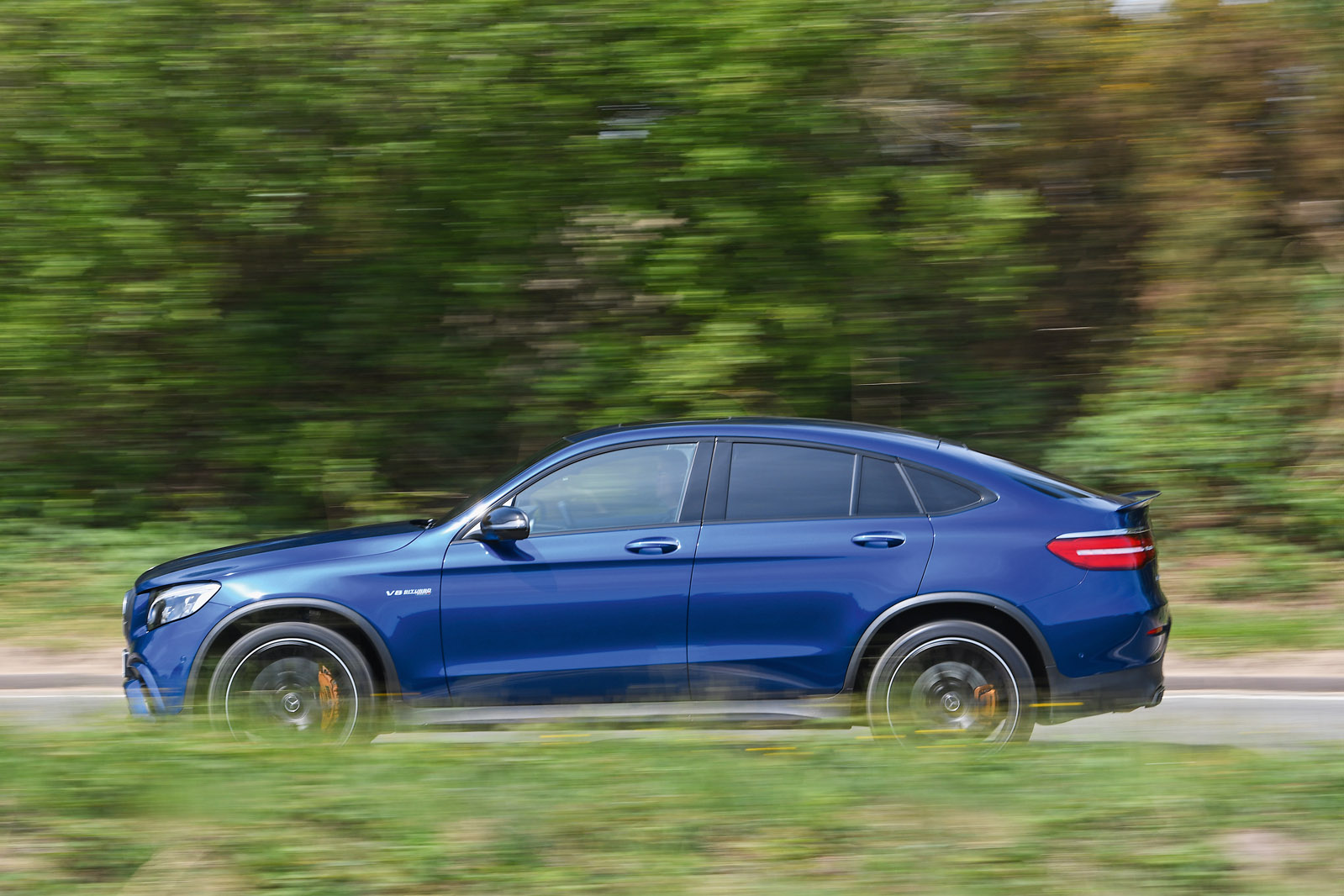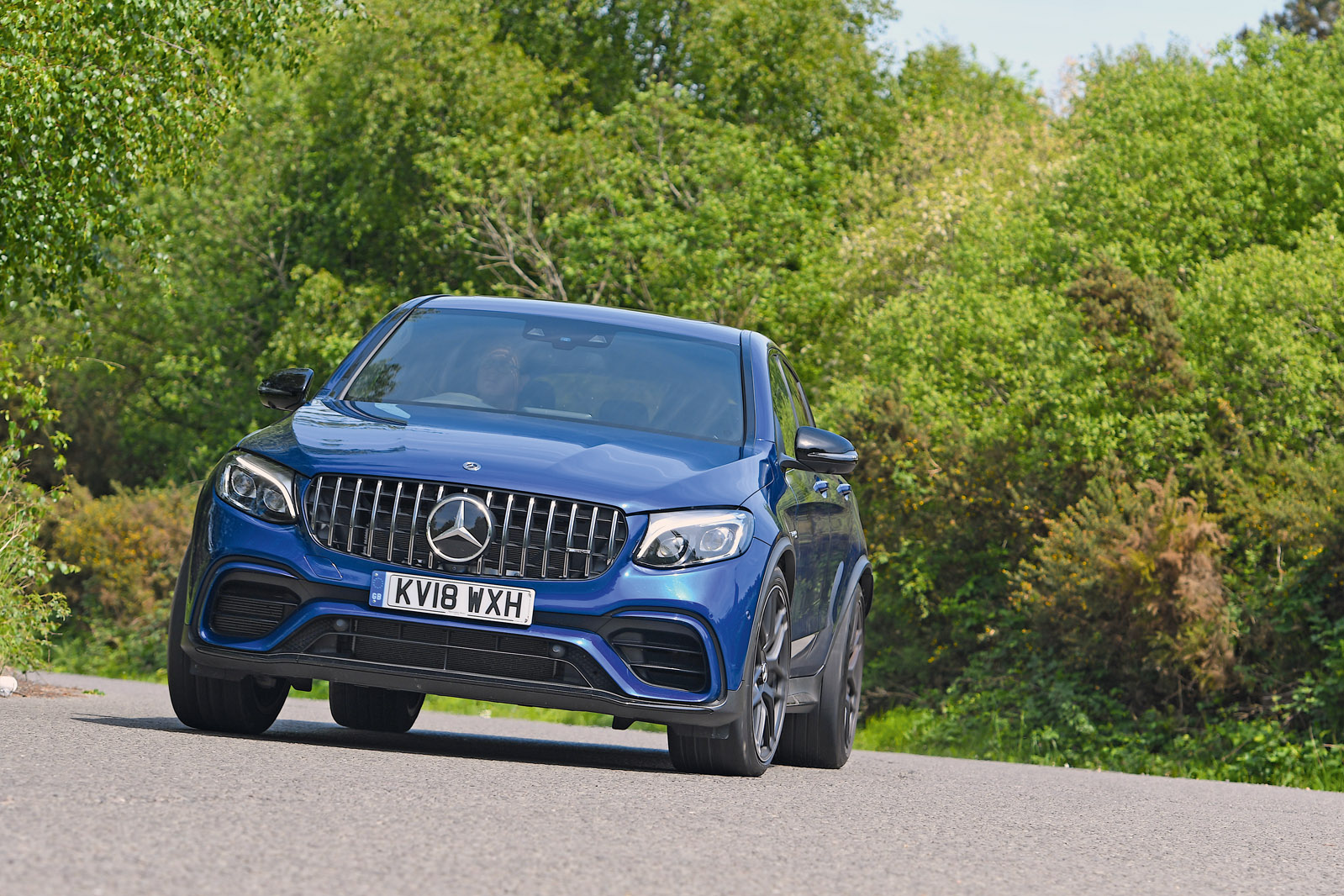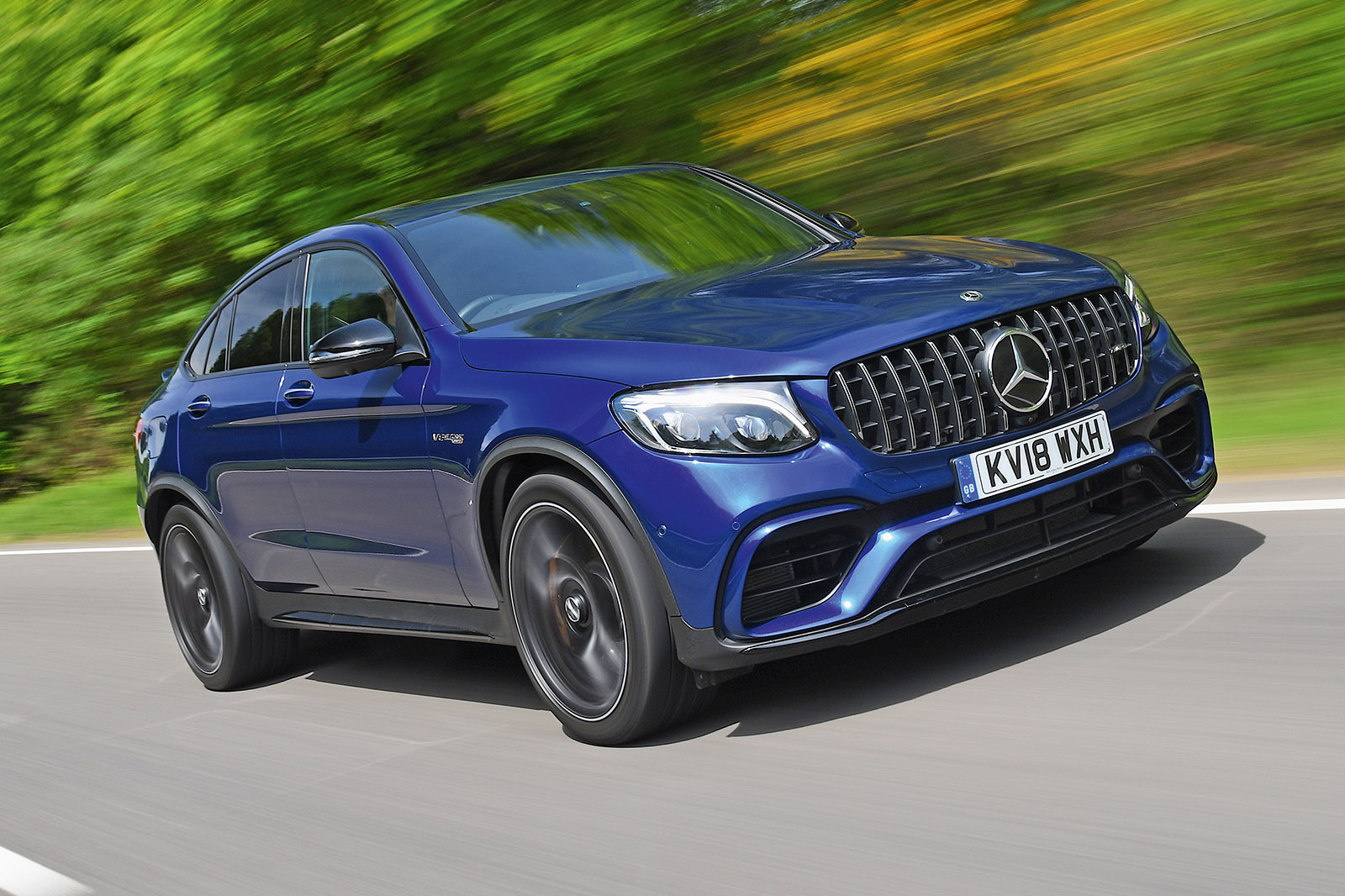The GLC’s capacious cabin is getting a touch long in the tooth. Will that be of much consequence for a four-cylinder diesel version costing less than £40,000? Perhaps not, but anybody spending double that for an AMG badge might expect more in the way of material quality and a digital showcase.
Certainly, dark fabrics and a high dashboard mean it’s suitably foreboding within, but compared with the vast glass displays that sit adjacent to one another in the dash of the E-Class, this car’s analogue dials and heavily bezelled screen seem a touch off the pace. It’s no surprise that a range-spanning update next year will introduce a digital instrument binnacle as an option.
One might also expect fewer plastics within the interior’s lower hemisphere and among the finer trim details (on the vents, for instance), and we’d readily trade some of the extensive carbonfibre trim for a greater sense of robustness. One tester commented on the flimsiness of the pivoting cover for the cubby in the centre console. Another noted the slight play in the window switches.
No such complaints arose when we tested Audi’s Audi SQ7, although the Mercedes’ cabin does boast a greater drama quotient. This is not least because of its firmly supportive, low-slung bucket seats and swooping transmission tunnel.
The most expensive GLC of all gets the same Comand Online set-up that you’ll find in a top-spec C-Class. As such, you get not only the same moderately well-resolved 8.4in display, DAB radio and satellite navigation, but also the unintuitive touchpad on the transmission tunnel. Fortunately, there’s a rotary controller positioned beneath it, and it’s this that you’ll mainly use to navigate the system’s generally straightforward functionality (albeit with some latency, it must be said, particularly just after start-up).
In the end, BMW’s iDrive system remains easily the more intuitive digital landscape to find your way around, and it looks neater too. This being an AMG model, there’s also the Track Pace app, which, in the unlikely event of the car seeing any circuit action, can send real-time parameters such as speed and steering angle to an iPhone app, saving lap and sector times all the while. If you record your lap, the software can then superimpose telemetry data on the imagery.
At 500 litres, boot space exactly matches that of the Macan and the similarly-profiled BMW X4, and as per the BMW, a sloping roof limits the capacity for carrying taller items. Factor in the awkwardly narrow boot opening and this car is about as suitable for a run to the tip as it is likely to be seen at one, although passenger space along the rear bench is adequate, even for six-footers. The central occupant will need to straddle the transmission tunnel, mind.


